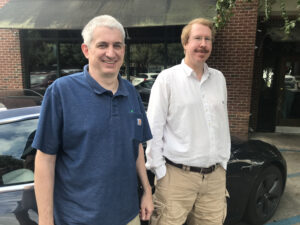
They say necessity is the mother of invention. When Austin Meyer needed to practice and polish his flight skills, the training devices available at the time were not good enough for what he wanted to accomplish. So he combined his passion for aviation with his experience in computer programming to start his company, Laminar Research, and develop X-Plane.
The Gleim X-Plane Flight Training Course uses the incredibly intelligent X-Plane software as the foundation for teaching aviation through simulation. Combined with the Gleim Virtual Cockpit™, which uses a custom-built X-Force PC, this system revolutionizes flight training with a powerful flight training system that is both affordable and easy to use.
Gleim visited Austin Meyer, founder of Laminar Research, and Michael Brown, owner of X-Force PC, at their headquarters in Columbia, SC to learn more about them and their companies.
Q. How did you get into flying?
Austin: My uncle had a flight simulator in his house when I was 8 or 10 years old. I would go and fly this physical, mechanical simulator, and I saw it was pretty easy to fly an airplane. So I thought I would try doing it for real!
It was instruments only. It was so primitive, it was ridiculous, but still cool. Then I started flying planes at the age of 15, so that was in 1984.
Michael: And I’m not a pilot.
Interviewer: That can change!
Michael: Yeah, it could (skeptically)… I know a decent amount about flying from simulators, but I’m not a pilot.
Q. How did you meet?
Austin: Oh, we were just friends in high school.
Michael: Well, fourth grade, actually! We used to ride bikes together and then as we got a bit older we would pull pranks together. We never damaged anything, we just liked to do pranks.
Q. Why did you write X-Plane?
Michael: Well, the original intent was not to become a commercial product, right?
Austin: The original intent was for me to practice flying. When I got my instrument rating, I was having a difficult time getting an instrument recurrency check passed. I needed a flight simulator to help me practice, but [another product] was not really a great simulator, and I couldn’t customize it to my airplane and the type of flying I wanted to do. I started a sim so I could do my own instrument currency.
Q. What type of degrees do you have?
Austin: Aerospace engineering from Iowa State University.
Michael: So basically the quintessential degree to get!
Austin: And I got some coding skills from Carnegie Mellon. I went there for two years, and I was a mechanical engineering major. But really the only benefit I got from there was the computer science courses I took. Going to both of those colleges is what brought together the skills needed to write flight sim, which of course are computer programming and aerospace engineering.
Michael: X-Plane is different than other flight simulators in that it calculates (using aerospace engineering formulas) [in] real-time what the plane is gonna do and calculates it two times per (visually-rendered) frame. So it’s calculating, literally calculating, running it through a formula as opposed to imitating flight.
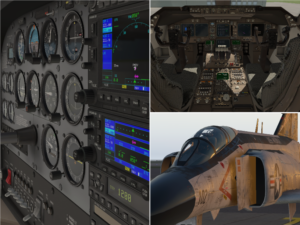
Q. Is this a revolutionary product?
Austin: I think it is, and here’s why. Other flight sims imitate the performance of an airplane. So you just tell the simulator “if someone pulls back on the nose, I want you to raise the nose of the airplane” and “if you push forward this much on the throttle, I want you to accelerate this much.” They imitate aircraft performance.
I think it’s reasonable to say that it’s impossible to learn anything from imitation, right? You can’t learn how a new airplane is gonna fly. You can’t learn something new about the airplane when all the sim is gonna do is regurgitate what you told it. So what X-Plane does–what I believe is the right thing–is it builds up the forces on every little bit of the aircraft, at say, 80x per second, and from building up all the forces on the aircraft, it then accelerates the aircraft. The acceleration is integrated over time to velocity, and velocity is integrated over time to position.
X-plane is actually a force-based simulator, it builds up the forces on the aircraft, and because of this, it will predict what the airplane will do next, even if no one has ever done this with the airplane before. You don’t imitate what the aircraft is gonna do, you predict it. Much, much harder to do, but a much better result.
Q. What’s an exciting way X-Plane is being used?
Michael: There are people who will use X-Plane to test a plane that hasn’t even been built yet because they want to know if it’ll work.
Austin: Yeah, we are doing that in extreme detail with our electric VTOL (vertical take-off and landing) aircraft right now. I’m working on an electrical vertical take-off and landing airplane with a company in Burlington, Vermont, and we are funded for the next 10 years. This aircraft is going to deliver organ transplants up and down the East Coast. For it to do this job, it has to takeoff and land vertically so it can land at hospitals. It has to have zero emissions because the person funding it doesn’t want to pollute the air while delivering replacement lungs, and it has to never get stuck in traffic, which means it has to go through the sky, not on the ground.
We’ve already built our first prototype and flown it, and the second prototype, [which] is in the final stages of its design and construction, will probably start this coming year.
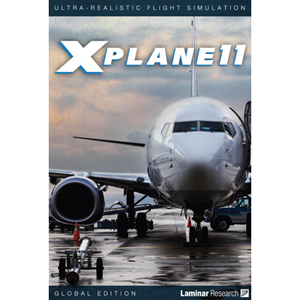 Q. How did this become a business partnership?
Q. How did this become a business partnership?
Michael: Austin reached a point where he was like, “Oh, I could sell this.” But he was selling it for kind of a high price, about $500, but low volume–this was probably in the early 2000s or late 1990s. He was starting to phase toward lowering the price and increasing the volume, but he was shipping all this stuff out of his house. So I starting shipping X-Plane, and I was probably shipping 10-15 per day, and that’s really how the business relationship started.
Then it got to the point where I was doing a lot more volume than that–like 100 per day out of my house–and it grew over time.
I didn’t start the computer thing until about 10-15 years ago, and I was just doing that on the side. I have only been [building custom computers] full-time for about five years. I was just doing the shipping to start.
Austin: It was a shipping service!
Michael: In the past couple years, X-Plane has been shifting to digital download– I’m only shipping two to three physical copies per day. About five years ago, we started coming up with packages (think Gleim Virtual Cockpit™ Ultimate Set) and it kind of morphed over time.
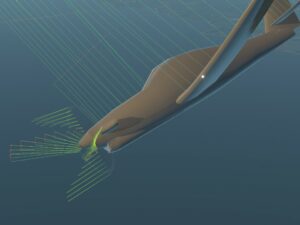
Q. What does your business look like today?
Austin: So I continue to code the flight model, which is what makes the sim fly how it flies. And we’ve got about 15 other people now in the company, none of whom are physically near me. We have people all over the world–a handful in Germany, Italy, and spread out through the country–who manage everything from tech support, to marketing, aircraft and scenery creation, scenery management, the list goes on. Everybody works remotely, and we get together about every six months and decide what we’re gonna do for the next six months.
Michael: I have a small office, and I’m looking for a bigger space since we have so much going on! Right now, we’ve done as much revenue this year as all of last year, and we still have the last quarter. Gleim covers about 10% of what I do.
Q. Where do you see X-Plane and flight simulation going in the next 5-10 years?
Austin: We’re constantly adding new scenery, new airplanes, new airports, better graphics–I’m always improving the flight model. We’re working to improve frame rates so the whole thing runs smoother and faster. People have seen the sim get a lot better over the last five years, and they’re gonna see it continue to get better over the next five years.
Michael: Let me give my two cents on that. A lot of people believe virtual reality is the future. But the current generation of goggles is so blurry you can’t read the instrument panel. X-Plane is built and ready to go with virtual reality right now, it’s one of the best programs for doing virtual reality. The limitation is with the headset; it gets really hot and uncomfortable, so everything needs to get lighter and less obtrusive in addition to the visibility improving.
Austin: Also you need to be able to see your hands!
Michael: I think what we’ll see next is flying in the “living world,” to the point where if I’m flying over Columbia and you’re flying over Columbia, and I look out the window, I see you there flying.
Austin: Massively multi-player online flying–but that’s way down the road! Right now, X-Plane 11 is training in the real world because there are real cities and landmarks.
In the future, I’ll have everything in the dynamic world where everything changes. The question is no longer “Can I keep it right-side up?” The question is, can you make it safely from one point to another when things go wrong en route that cause you to then say, “Whoa, this wasn’t supposed to happen!” Can you still get to a safe arrival? That’s what flying an airplane really is and that’s the level where I want to take X-Plane in the future.
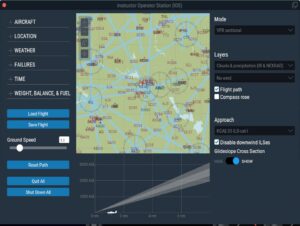
Q. What are the benefits of learning to fly from simulation?
Austin: Without question, it costs basically nothing, it does not get grounded by weather, it’s almost never grounded by maintenance problems, you can have unlimited crashes, you don’t burn any fossil fuels, and it’s almost like flying a real airplane. So you get a huge percentage of the experience of flying an airplane for about zero percent of the cost. That’s why you want simulation to keep your skills up. If you’re not a pilot at all, you want sim to see what it would be like to fly an airplane, to see if you like it, which is exactly how I got started.
Michael: We have a lot of senior customers, and I have a fair number of people who used to fly a plane and they want to have that experience again. They might be grounded for medical reasons so they get a simulator instead.
Additionally, we have people coming into aviation that are just learning, and then there are customers who say, “I have a plane, but I want to practice flying into this airport that I’ve never flown into before.”
Austin: Any time I have some kind of idea for some kind of crazy airplane, I can put it into X-Plane and test-fly it. I can try out new airplanes in the sim in one afternoon. I can see what it would be like to fly another generation of aircraft that no one has ever built. I can take what basically would be a decade and millions of dollars and years of construction and development and condense it into the experimental aircraft and fly it, which is what I do constantly. So you can also move into the future with just a few mouse clicks.
I think it’s the best flight sim on the market. It’s a slam-dunk purchase for anyone that’s interested in aviation!
Paul Duty, Chief Instructor at Gleim Aviation was introduced to aviation in the mid 90s and used desktop flight simulation during his training. He said, “The Gleim X-Plane Flight Training Course perfectly meshes the Private Pilot Syllabus with X-Plane to teach the same lessons that you’ll learn in the real-world. It is like having a digital flight instructor who monitors your training flights and provides feedback on your maneuvers. When you complete the training course before starting to fly, you’ll quickly realize how simulated flight builds proficiency without leaving the ground.”
For more information about the Gleim Virtual Cockpit and the X-Plane Flight Training Course, visit our Simulation page online or contact an Aviation Training Consultant at 800.874.5346, ext. 471.
Written by Callie Wilkes, Gleim Aviation Marketing & STEM Coordinator
About Gleim Aviation
Since 1980, Gleim Aviation’s team of pilots, instructors, writers, designers, and programmers has helped aviators pass millions of FAA knowledge and practical tests using the unique Gleim Knowledge Transfer System. Gleim is an environmentally-friendly company headquartered in Gainesville, FL.

